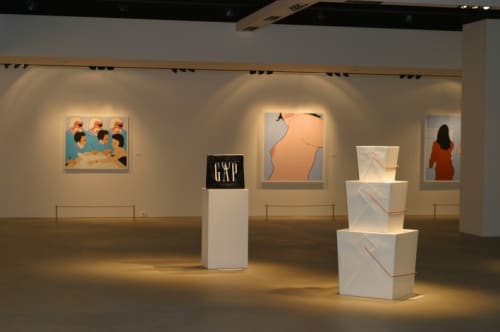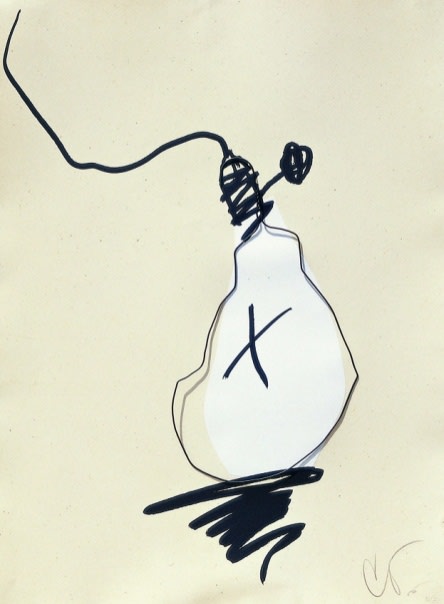Pop-thru-Out
Period | 27 May – 20 July, 2003
Venue | Arario Gallery Cheonan
Works | 42 pieces including installation, sculpture and painting
Opening Reception | 6pm, 27 May, 2003
Participating Artists I Andy WARHOL, Ashley BICKERTON, CI KIM, Claes OLDENBERG, David HUMPHREY, David SALLE, Duane HANSON, Ed RUSCHA, George SEGAL, Haim STEINBACH, Hiroshi SUGIMOTO, Ian DAWSON, Jack LILLIES, Jean Michel BASQUIAT, John WESLEY, Jonathan BOROVESKY, Jonathan SCHNABEL, Lisa RUYTER, Mike KELLY, Peter CHAIN, R. CRUM, Richard ARTSCHWAGER, Robert RAUCHENBURG, Roy LICHTENSTEIN, Simon LINKE, Solomon HUERTA
POP-thru-Out hopes to show the winding path that has brought us to the present. This exhibition posits a wide range of artists spanning multiple generations, interests and origins. It is our pleasure to present Pop-thru-Out as an opportunity to examine specific works as an open history, one that remains fluid, alive and argumentative.
As the title indicates, the focus of the “Pop-thru-Out” exhibition is to present “Pop Art” as a comprehensive art movement beyond generational and individual styles, ranging from the early Pop artists of the late 50’s to younger artists working today, who try to embrace popular culture and life in art in terms of themes and materials. As the expressionist abstraction of the U.S. and Informel of Europe since the Second World War lapsed into self-contradiction, a group of artists started expressing their antagonism against the originality and uniqueness of art and attempted to employ motifs of popular culture in their art.
Among those, Andy WARHOL made use of images of pop stars or mass products in his art, that started prevailing in the 60’s. <campbell's soup="" box="">(1985), this exhibition is part of his series of countless Campbell's soups, the most frequent motif of his art. Nevertheless, though WARHOL represented mass products as icons of contemporary culture, his work still retains artistic and abstract quality in spite of the popular taste of the images. We can observe irony in (1980-1) by the same artist in that the shiny surface transforms the figurative image of highheels - a symbol of femininity - to the abstractive. Haim STEINBACK also uses images of mass products in his art. By producing objects as if they were on display in a shop, he blurs the boundary between art and life. Though his art in general can be characterized as pop art, the repetition of objects, for instance, in (1990) and <beep, honk,="" toot="">(1989) display a strong sense of aesthetics and draw our attention to the design aspects of mass products.
Images of pop stars were another significant motif of WARHOL’s work in addition to those of mass products; for example, Hiroshi SUGIMOTO’s portrait of the late Diana, (1999), can be understood as a successor to the history of Pop Art. Duane HANSON is an artist known for his lifelike sculpture cast from live human models. HANSON can be considered a Pop artist in terms of that his art features ordinary people such as merchants in (1990) and tourists. Cars were another preferred motif by Pop artists of the 1960’s. Especially, the vertical arrangement of metamorphosed car images by Peter CAIN represent the culture of the 1960’s characterized by cars and sex. Ashley BICKERTON, the artist of (1991) and (1992) eternalizes the ephemerality of pop art by enshrining Elvis Presley’s costume - a symbol of the pop culture of the 1960-70’s- in diving apparatus.
In general, the first and next generation of Pop artists can be characterized by masculinity, laconism, superficiality and the graphicness of their images. This can be best exemplified by Ed RUSCHA’s (2000) and (1994) which feature sectional scenes of streets with signs. Planeness in John WESLEY’s images composed of simple lines and planes can be understood in line with Roy LICHTENSTEIN, who incorporated benday dots used in the print process in his cartoon-like images derived from pop culture. Simple lines and vivid colors in Solomon HUERTA's work also shows design elements. Even though we do not see their faces, we can make a distinction between men and women, black or white by the skin tones and contours of their bodies, while walking in the street. In the rearview images of people, as if seen from behind, Huerta seems to express the sense of isolation among those living in contemporary society.
During the 1960’s, Pop Art had been criticized for indifference or a submissive attitude toward pop culture and consumer society; though one can insist that their indifference without making any comments can be viewed as another strategy of severe criticism. Under the influence of the Pop Art of the 1960’s, the next generation artists also appropriated the motifs of pop culture and consumer society. However, their interpretation and viewpoints of life and pop culture seems diversified in various expressions. Fun and sharp sarcasm coexist in R. CRUMB’s caricaturistic drawing with insightful depiction of the prejudice prevailing in our society. In his human sculptures with blank looks, which employ icons from reality and pop culture, George SEGAL reveals the isolation and conflicts among those living in contemporary society. His work, for example (2003), involves the audience in the theatrical space created by the fixation of a moment. The audience is invited to muse upon the solitude of individuals in contemporary society. Mike KELLY produces a grave and gloomy atmosphere in his work based upon advertisement images by transforming them. KELLY’s art starts from images of the mass products around us, but creates an unique aura by transforming them in various ways; as is exemplified by (1996) comprised of the enlargement of the landscape on the butter case and wire entanglement on it. This is the case in CI KIM’s work. The barcodes or X-ray images incorporated in his work deviate from everyday life and become a part of art as they are combined with various images the artist chose.
David SALLE’s (1997) makes a strong impression by juxtaposing various images from different times and spaces. At a glance, it seems a combination of discordant images; however, the artist incorporates a certain narrative, which is too ambiguous to be noticed by the viewers. Along with ambiguity, his use of divided canvas can be read as postmodern quality against the tradition of art. David HUMPHREY pays attention to the unconscious desire of human beings in his work composed of strange combinations of various images. Lisa RUYTER takes photos of daily scenes, transforms them and adds colors to create unfamiliar space.((2000), (2002))
Pop art is not only a movement or a certain ‘-ism’ born out of the specific period of the late 50’s and 60’s against the background of the rapid development of pop culture, but also a persistent attitude among artists toward art. In this exhibition presenting 26 artists, whose working strategies are an extension of Pop Art, the Arario Gallery aims to provide our audience with an opportunity to take another view of Pop Art as an open history, which is still changing, thought-provoking and full of vitality. We hope the artworks in this exhibition will be a starting point for further discussion about the significance of Pop Art in the present and the future, as well as in the history of art.





















